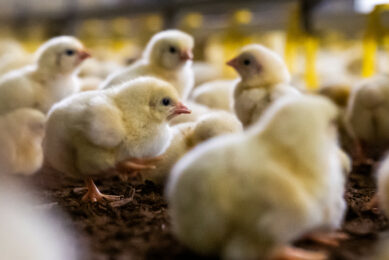EU measures halve human Salmonella cases

Salmonella – a bacterium causing salmonellosis in humans – was until 2005 the most common food-borne disease in European Union (EU) with almost 200.000 reported human cases that year.
It is estimated that the overall economic burden of human salmonellosis for the EU could be as high as €3 billion a year.
The coordinated approach by all EU actors has had significant results: human Salmonella cases have been reduced by almost one-half in the EU over five years (2004-2009).
At the same time, the prevalence of Salmonella in poultry decreased significantly, especially in laying hen flocks.
The reduction of the bacteria in laying hen flocks is likely to be the main reason for the decline of Salmonella cases in humans, since eggs are considered the most important source of human infections in EU.
Salmonellosis is a zoonosis – disease or infection that can be transmitted directly or indirectly between animals and humans.
The bacterium is commonly found in the intestines of healthy birds and mammals. It can spread to humans through contaminated eggs and meat, most often poultry and pig meat. Usual symptoms include fever, diarrhoea and abdominal cramps.
Joint EU actions scientifically supported by EFSA
To combat human salmonellosis it is important to reduce Salmonella in animals and derived products so that food is safer for consumers.
In 2003, the EU set up comprehensive control measures for zoonoses, considering Salmonella as a priority. Enhanced Salmonella programmes in poultry were implemented in all EU Member States and targets were set for reducing the bacteria in poultry flocks (laying hens, broilers and turkeys).
To support the reduction of Salmonella in the food chain, the European Food Safety Authority (EFSA) has advised on the risks for public health from infected animals and provided recommendations and advice on control and reduction measures, such as reduction targets in poultry and poultry meat and the use of vaccines and antimicrobials for the control of Salmonella.
EFSA has also evaluated the impact of different control measures for Salmonella in pigs.
Reducing salmonella in layers
A concrete example of EFSA’s work is its contribution to the setting of EU reduction targets for Salmonella in laying hens.
To determine the original situation, the European Commission and EU Member States carried out an EU-wide survey on the prevalence of the bacteria in poultry flocks and EFSA analysed the results of the survey.
Based on the findings EU and national decision-makers set targets to significantly reduce the prevalence of Salmonella in flocks of laying hens to 2% or less over time in all EU Member States (from an original situation of around 20% in some Member States).
The impact of the reduction and control programme on the actual prevalence of Salmonella in animals and its impact on human salmonellosis cases is analysed annually in EU Summary Reports.
Check All About Feed’s Salmonella special http://www.allaboutfeed.net/salmonella-special/











